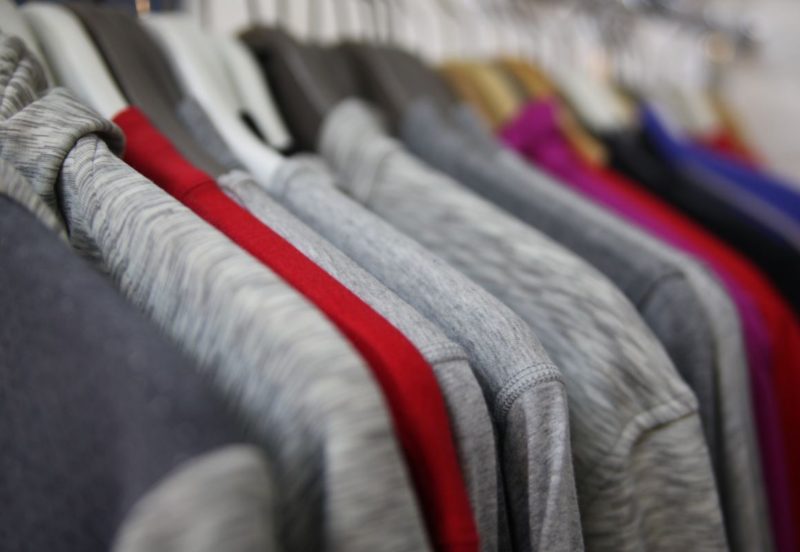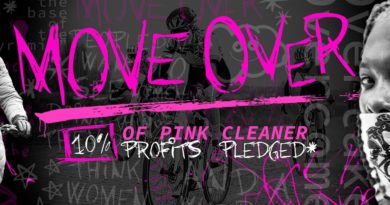Comment: How giving old gear a second life can create new customers for the industry
Words by Charles Ross, specialist in performance sportswear design and sustainability
Is Cycling the Greenest form of Transport?
Surely the answer must be yes as it is the bike that replaces all those metal boxes? Cyclists enabling better traffic flow, improving their own health, and giving themselves an endorphin boost, right? Whether as a commuter, a fitness activity, or even a leisure pastime, the bicycle puts its participants up there with the walkers, the skiers, and the surf community in respecting nature, all while delivering a feel good sensation. In recent years, further information has come out about how using a bicycle provides positive action towards depression sufferers, among others.
As has been stated before, the answer must be affirmative, right? The seasons are changing and, if the media is to be believed, then global warming is starting to take effect. There are now scales to work out how much of a footprint cycling creates in terms of energy (carbon), water, and waste – the comparisons to other forms of transport demonstrate results that emphasise how much better we are for the future of the planet. Should we congratulate ourselves (even become a bit smug) at the thought of our contribution? Is there anything else that the trade could do to make the world a better place? The answer is actually, yes, lots more can be done.
In terms of sustainability there are two normal categories: doing the existing practice better; plus doing better things. Cycling scores well on the second category, if you think in terms of transport alternatives, but actually rather fails in the initial classification. Whereas most activities struggle to provide a dynamic alternative, cycling scores well; but on the internal audit of the sport, it fails in comparison to similar activities in using products with higher environmental impact.
Currently the British Government seems keen to divert attention away from bigger matters by taking forward the subject that David Attenborough’s Blue Planet 2 concluded on: marine waste. Michael Gove seems to be repositioning the DEFRA ministry to one of leading Government importance with approval from the Prime Minister. The message that has lasted beyond the transmission is that of the waste in the sea, especially the plastic. Pictures of whales confusing buckets with food in addition to dead and dehydrated albatross with stomachs full of bottle tops. The plastic bags and buckets in whale stomachs are like the micro-plastics nurdles in birds; they block up the dietary system so that other nutritious food can’t be eaten.
 For small animals, micro-filaments from clothing have a different effect. The strands are thinner than human hair and thus can end up in vital organs when it eventually becomes part of the food-chain. Stuck to these nano pieces are the worst chemicals of the sea: the PCBs, DDT, PFCs, pesticides, and herbicides; chemicals that are non-biodegradable (so won’t disappear in the environment), bio-accumulative (they gradually build up inside your body until critical mass is obtained that will over-power your natural defences), and toxic (i.e. they will kill you!). Surfers Against Sewage have gone from being a single-issue set-up against marine pollution to representing much of the plastics-in-the-ocean lobby, highlighted by being one of the seven charities that Prince Harry asked for wedding present donations to be made to.
For small animals, micro-filaments from clothing have a different effect. The strands are thinner than human hair and thus can end up in vital organs when it eventually becomes part of the food-chain. Stuck to these nano pieces are the worst chemicals of the sea: the PCBs, DDT, PFCs, pesticides, and herbicides; chemicals that are non-biodegradable (so won’t disappear in the environment), bio-accumulative (they gradually build up inside your body until critical mass is obtained that will over-power your natural defences), and toxic (i.e. they will kill you!). Surfers Against Sewage have gone from being a single-issue set-up against marine pollution to representing much of the plastics-in-the-ocean lobby, highlighted by being one of the seven charities that Prince Harry asked for wedding present donations to be made to.
Some supermarkets have started to announce plastic-free aisles, but the wiser commentators have pointed out that the extra damage to goods will rise if the produce is loose and that will have a bigger impact, alongside heavier packaging (think how Tetra Pak has a lesser transport weight than glass). Will garments being shipped halfway round the world end up clean enough for an easy sale?
Although some media will try to convince you that washing a fleece is comparable to burning down woodland, in reality it is the chemicals stuck to the clothing fibres that prompt the problems. The chemicals are the dangerous part; plastics apart from PVC (those using PVC should replace it with TPU!) are essentially inert. These chemicals stick to all solids in the sea. Although some fibres will degrade (think cotton), not all natural ones will, and some of them (think wool) will take between five to ten years to do so. Current bio-plastics are not degradable (think Castor Oil extract nylon & PLA Ecodear plant polyester); furthermore petrol chemical products are not (regular nylons & polyesters).
Depending on the quality of the yarn used, a ‘fashion’ acrylic jumper will shed over 100 times more fibres than a performance fleece. On top of this, UV has a substantial effect on making yarns weaker – the longer the garment is used for the faster it wears out.
Washing fabrics does produce the wet durable effect; micro-filaments come off the garment and get washed away. Although the majority is captured by the detergent or soap, the sewage process in the country captures the bulk. The #DontFeedTheFish project has started to quantify the situation, with specialist chemist Sophie Mather investigating creating more durable fibres. This contrasts with Leeds University’s Performance Clothing Research Group measuring the actual wash-off amounts. This work is being considered alongside that of Neil Lant, the P&G Laundry Research leader at their Northumberland site which is carrying out similar trials to Leeds, but in domestic machines with real soiled clothing wash loads. A couple of items have appeared on the market (the Guppy Friend laundry bags & the Cora Ball) which both collect the micro-filaments to stop them entering the waste water process, but are also available as counter-top additional sales items.
The European Outdoor Group has been instrumental in the setting up of the MicroFibre Consortium, whose reach is beyond that of the EOG in both terms of its worldwide membership and High Street store membership. Their keenness to provide a mechanism to investigate the problem properly has been seen by some as an admission of guilt in causing the problem, but in reality the EOG has experience of working towards the common good post the formation of the Zero Discharge of Hazardous Chemicals response to the Greenpeace Detox campaign at the start of this decade.
Synthetic textiles (nylons & polyesters) are coming in for criticism from the pressure groups, but it should also be pointed out that the dangerous chemicals in the sea are often used to grow the natural textiles. Cotton represents around 1.4% of the growing world’s land use, but accounts for 11% of the pesticide use as well as 23% of the herbicides; debates have started about why clothing crops are still grown whilst 1 billion of the world’s population live below the nutritional poverty line – synthetic chemicals can offer a looped process which allows post-consumer items to be regenerated into new items. Although the last major conflicts in the Middle East have been labelled as the “oil wars”, it is felt that the next phase could be conflicts over water. A cotton t-shirt is estimated to be 2,500 litres of water to grow, dye, & make; a pair of jeans over 7,000 litres – whilst a human consumes about 12,000 in their lifetime.

Synthetic yarns are a development of post WW2, but it is known that, since 2005, more plastic has been produced than the total of the preceding 50 years. 99.5% of oil extracted from the ground is either burnt or buried, so little is still in continuous use (or looped for further continuous use). Although local Councils seem to have recycling facilities, too much plastic is burnt as fuel for energy provision so that only 14% of the plastic produced is recycled in the UK. The regular coffee cup is know recognised as being a combination of a paper holder, but a plastic liner – something that only three plants in the UK can recycle. However, technology is progressing: Worn Again has developed a process that will allow for the production of both rPET and cellulose from Polycotton feed-stock (traditionally mixed materials have been unrecyclable)
No matter how much the technical side of the materials in the laundry and the sea are brought to light it is still recognised that the most sustainable garment you can own is one you have already. There have been moves by many brands to set up their own in-house repair and reconditioning services. In terms of footprints, it is recognised that keeping a garment going for longer will be less of a drag on resources than replacing it before it is beyond reconditioning to return it to its original performance status. The design stage of a garment will influence where up to 80% of the footprint happens, but the longer a garment is used for, then the more the domestic laundry becomes the largest part, which negates the massive impact stage of making and selling the garment in the first place. The biggest durability problem with garments these days is not the physical durability, or the fit durability (as exemplified by growing kids), but the emotional durability – how long we love to wear a garment for. This latter measure has opened an opportunity within the Outdoor field (amongst others) for GiftYourGear.com which re-appropriates unloved clothing that has been superseded, but still works. This way, those who can’t afford to equip themselves with performance product are gifted a better experience of the activity, which is key for the cycle market to creating new customers. The project has been credited with increasing footfall to retail sites as the worry of virtual sales becomes realised.
To conclude, let’s look at three cycle brands that have pushed their environmental stance as an important consideration for their clothing brief – Vaude, Grn Bikewear, and Howies – against the majority who remain quiet on the subject. If Cyclists took their footprints seriously, then most of clothing brands would have eco-credentials. This article has just asked questions of the bikewear side of the industry; how much worse is the hardware side with carbon fibre, for example? If the brand wants to appeal to Millennials and Generation Z then it must recognise that these consumer groups’ eco-conscious values (as opposed to just a good price). Brands sustainable values are likely to be create customers for life.



